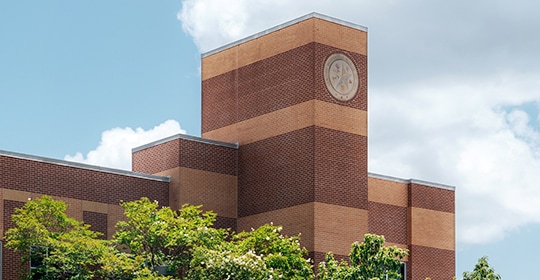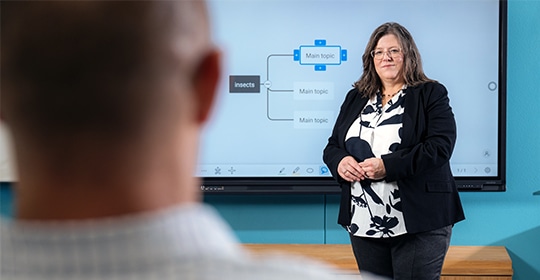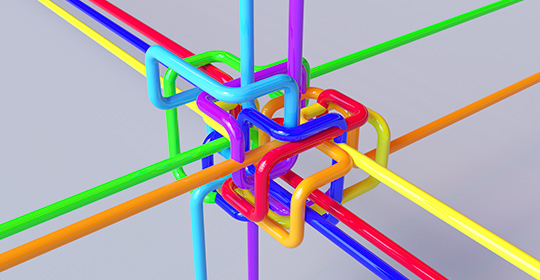
Amazing happens when creativity meets seamless collaboration.
Now everyone in your business can work smarter with faster insights, standout content creation, and the PDF tools they trust— all in one place. Let CDW's experts help you find the right plan today.
Shop by Public Contract
Find the best price on IT products for your organization.
- CDW Corporate
- Healthcare
- CDW·G
BROWSE BY INDUSTRY
- Federal Government
- State and Local Government
- K-12
- Higher Education
Why Work with CDW?
We bring together the services and technologies that solve your business problems.
Expertise & Experience
Industry-Leading Partnerships
End-to-End Support
Industries we solve for:
- Federal
- Healthcare
- HiEd
- K12
- State & Local


Aug 20, 2025
Services
Return to Office: How Federal IT Leaders Can Maximize Existing Tech
Article
4 min
Federal agencies need to prepare their existing technology to accommodate and optimize their systems for employees returning to the office full time now and into the future.


Jun 24, 2025
Cloud
Streamlining Federal Government Operations Through Cloud Efficiency
Article
4 min
Your federal agency can streamline operations, improve security and reduce costs when you invest in your cloud environment.


Mar 19, 2025
Services
Cyber Resilience Is Essential for Federal Government Agencies
Article
4 min
Federal agencies need to have a strong cyber resilience strategy to not only defend against attacks, but also to avoid interruptions and enable faster recovery.


Sep 03, 2025
Cloud
Preparing for H.R. 1: How AI Call Centers Can Keep Patients Connected to Care
Article
3 min
As the One Big Beautiful Bill Act reshapes coverage and eligibility requirements, cloud-based solutions can reduce confusion, protect revenue and improve the patient experience.


Aug 25, 2025
Data Analytics
How Minimum Viable Data Governance Enables Smarter Healthcare
Article
3 min
Agile yet essential data governance practices help healthcare organizations move faster, smarter and toward innovation.


Aug 06, 2025
Digital Workspace
How Ambient Voice Tech is Revolutionizing Healthcare
Article
4 min
Discover how ambient voice technology (AVT) is transforming healthcare. Enhance patient care, reduce clinician burnout, and improve efficiency with AI-driven, real-time solutions shaping the future of medical services.


Sep 04, 2025
Security
Stronger Higher Education Cybersecurity Starts with Enhanced Talent
Article
0 min
A better-trained, highly satisfied staff is essential for meeting today’s cybersecurity challenges in higher education.


Aug 19, 2025
Data Analytics
Establishing Modern Governance on a Data-Rich, Resource-Limited Campus
Article
3 min
The time for a right-sized approach to data governance across higher education is now.


Jul 01, 2025
Cloud
Canva Maximizes Efficiency for Designers and Empowers College Students
Article
3 min
At colleges and universities, Canva is giving users across campus access to advanced design features — helping to save time and money, power student success and enforce brand guidelines.


Sep 04, 2025
Security
Right-Sized Security Is the Answer for K-12 IT Teams
Article
4 min
With hundreds or even thousands of devices to protect, most school districts rely on small IT teams to manage enterprise-level threats. Smart planning makes all the difference.


Aug 18, 2025
Hardware
Leander ISD Sets Up Teachers for Success With Professional Development
Case Study
8 min
A bond-funded program brings robust coaching to a Texas district as it upgrades from overhead projectors to interactive flat-panel displays.


Aug 18, 2025
Hardware
Unlocking the Benefits of Professional Development in K–12 Districts
Article
3 min
A change management strategy helps to increase the ROI of new classroom technologies.


Sep 23, 2025
Services
Smart Spending, Better Outcomes: IT Optimization for Public Sector Leaders
Article
3 min
IT modernization works best when it’s designed for moving fast, spending smart and avoiding disruption.


Sep 10, 2025
Services
Reimagining Virtualization for Resilient Federal IT
Article
3 min
Outdated virtual infrastructure limits modernization efforts. Agencies must rethink virtualization as a strategic enabler of resilience, agility and mission success.


Aug 27, 2025
Services
Code, Edge and Core: Building the Future of State and Local IT
Article
4 min
State and local agencies can help improve the citizen experience by making sure code, edge and core work seamlessly together.
A Digital Workspace that Works for Everyone
Everything you — and your end users — need to get up and running from home base.






















